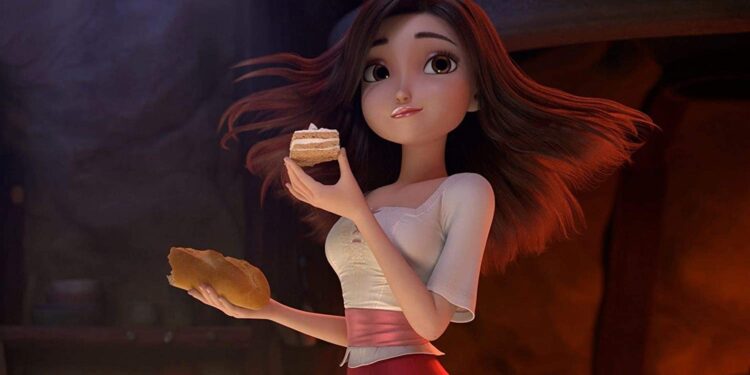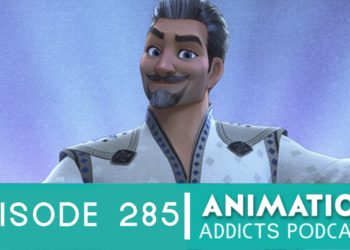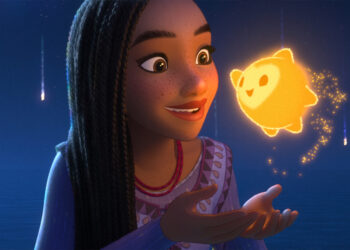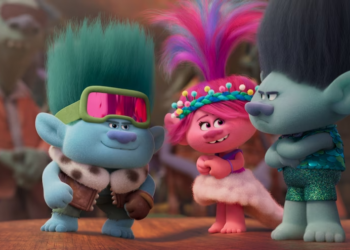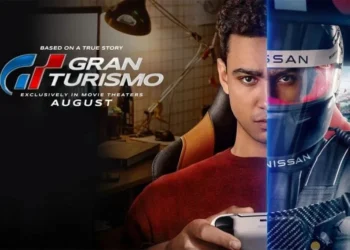From Locus Animation Studios, Red Shoes and the Seven Dwarfs is a charming yet poignant new take on the classic Snow White fairytale that challenges the age-old perception of beauty and the influence it holds on society. To celebrate the film’s September 18th digital release through Lionsgate, I spoke to voice director Tony Bancroft about his experience on the film and the passion it has evoked.
Tony: Have you had a chance to see Red Shoes and the Seven Dwarfs?
Yes, I did; I loved it actually! Extremely charming, I loved the message, I loved how they conveyed the message, and the characters were wonderful.
Tony: Oh, thank you. Yeah, I’m really—I’m just so proud to be able to talk about it, so I’m happy to be here with you and other reporters that are talking about it right now, so I can get the word out about this wonderful little [film]. It’s one of those little gems, you know, and in my career, I’ve been part of big, colossal things that I knew were gonna be big, but the things that are the most special to me at this point of my career are those smaller, independent gems of animation, and Red Shoes and the Seven Dwarfs is definitely one of them that I’m really proud to be apart of.
I 100% agree with you. So, how did you get involved with this project? I understand that you were the voice director?
Tony: Yeah, I was the voice director on the project, and it really came out of the blue. I took a trip to Seoul, Korea, for a financing gig for one of my projects—I don’t even remember what I was there for. Oh, it was a speaking event. And, I looked up a friend of mine, one of the artists on the film, Jin Kim. He was the main character designer on this film. And he was working at Locus Animation there in Seoul, and I knew that. I looked him up, we got together for lunch, and he said, ‘Oh, you’ve got to meet the director and the producer of this new movie I’m on, Red Shoes and the Seven Dwarfs’. So I said, ‘Oh, okay’. I thought it was just gonna be us for lunch, but he introduced me. They were so charming and so wonderful. They took me in, and showed me all what they were doing—not only Jin Kim’s work, the excellent character designs, but the production throughout. And, it was A-class quality from this little, charming studio in Seoul, Korea. I was blown away. And then, when they pitched the story to me, I was sold. I said, ‘If there’s anything you guys need, let me know.’ They were already gearing up and had animation supervisors and all that, so I didn’t really know what role I could have. But then they called me back and said, ‘We’re getting some nice, A-quality actors, some Hollywood actors, we’d love for you to help us out by being the voice director cause you’ve done so many voice directing gigs in the past.’ And I said, ‘Oh, that’s perfect’. So that was my way in. You know, I was just trying to find a way in, and I was so happy they came to me with this solution, so yeah.
I’m glad that’s the case, because like you said, it’s really a hidden gem of a movie, and I’m really glad it’s getting out there. So, Patrick Warburton plays the Magic Mirror. And, he previously voiced one of your characters, Kronk from The Emperor’s New Groove. Did that connection have anything to do with Patrick’s casting.
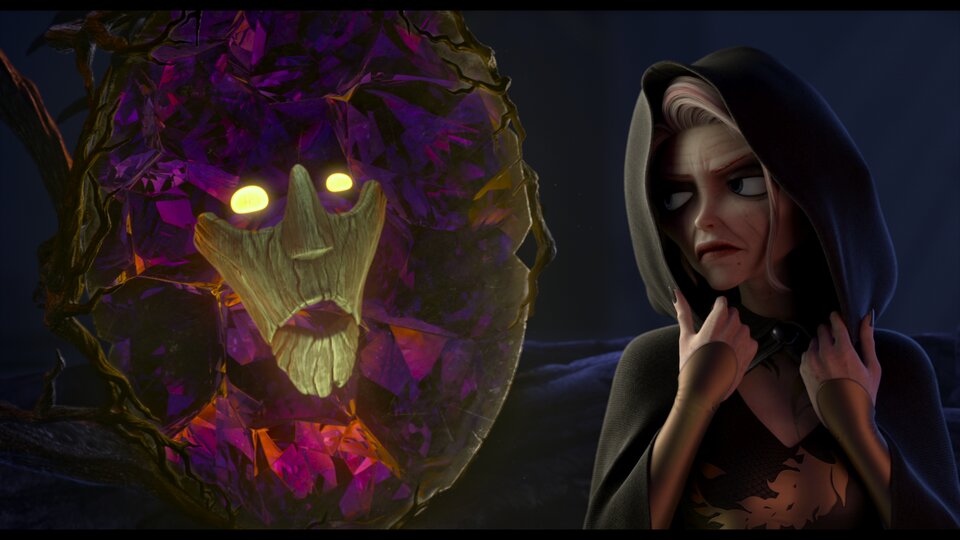
Tony: It did. When I came on as the voice director, they had already cast Chloë Grace Moretz, Jim Rash, Sam Claflin—well, Sam Claflin was almost cast, but they were working on getting him. And I was very supportive of all those casting choices. Gina Gershon, too. She was already cast. But they didn’t have anyone for the Magic Mirror, and they were throwing out a lot of names to me to get my advice. I kind of pushed him, pushed Patrick into the movie because I have worked with Patrick Warburton on, not only as Kronk, but on other movies that I’ve been apart of. And now, this is like the fifth project I’ve worked with him on. I said, ‘I really would love to see Patrick Warburton in this part, he would be perfect for it.’ And, it was up to the directors and producers though, not my choice. But, I really pushed for Patrick and they did, they got him in there. So, I was so thrilled to get in the room again with Patrick and direct him, in his voice. And he’s the kind of guy that doesn’t really need a lot of direction anyway, because he just goes. And he gives so much. And you know what you’re gonna get with Patrick, you know. He plays this kind of one part, but he plays it so well. I hope to work with him for 20 more films.
I had a feeling there was a connection there. Throughout your career, you’ve been an animator, a storyboard artist, a director—among other things—did you find voice directing to be any more or less challenging than your other roles?
Tony: I get, you know I must admit, I am one to get star-struck. That’s when I talk about meeting Chloë Grace Moretz or Sam Claflin and having lunch with them and stuff. I’m like a little kid; I get giddy about meeting these folks, and yet, most actors they’re professional, they’re down to earth, they’re just regular people. They really are. But there’s always this element of, ‘I can’t believe I meet them today!’ and I get so nervous the morning I’m going to record somebody. Like, when I went in to record Chloë Grace Moretz. She was calm, and cool, and collected, and professional, and wonderful and charming. And I was a little like a twelve-year-old schoolboy, I think. And here I am—you know, I could be her father. And you know, I felt all giddy and stuff so I had to kind of calm myself a little bit and just get into the professional recording of her voice. And the great thing is that, all of our actors on this film, Red Shoes and the Seven Dwarfs, were so down to earth and so easy to connect with, and so willing. They loved the script, they loved the concept, they really got into the roles. So it made my job so much easier. I could just go in and give them the details of the character and the backstory, and things that the actors really know, so they can deliver their best performance. It was a lot of fun. But I guess I can get a little geeky, too.
Completely understandable. From your experience, what makes an exceptional voice performance?
Tony: You know, some people really put their all into it. Voice recording for animation is a particular piece in that it can be very difficult for an actor to, because often time—and this is 100% on Red Shoes and the Seven Dwarfs—they’re alone in a room recording, and actors usually depend upon a stimulus, an energy that comes from another actor that’s beside them. And they pick up on that energy, and they’re very reactive to it. And when they don’t have that, they have to manufacture that more. And it can be very difficult. Not every actor is a great voice actor talent, that’s for sure. But in this cast that we had, most of them had done voice over before, most had some experience in animation except for maybe Sam Claflin and Gina Gershon—it was her first animated film. I would read against them oftentimes, and I would try and deliver that energy, or help take them into the direction where the scene is supposed to go emotionally by reading against them. So that was kind of one of the things I was nervous about, because I’m not an actor. But I know what they need, and need to be delivered so they can do their job. And I was happy to see that they all responded so well. They knew the material beforehand, they were all very prepared which is what you expect from a professional actor. But more than that, they rose to the occasion of understanding, in four hours—and it is a long session, you know—in four hours they have to keep their energy going and appropriate for the level of the scene. And they all did a super job, a wonderful job at doing that because it can be really tough.
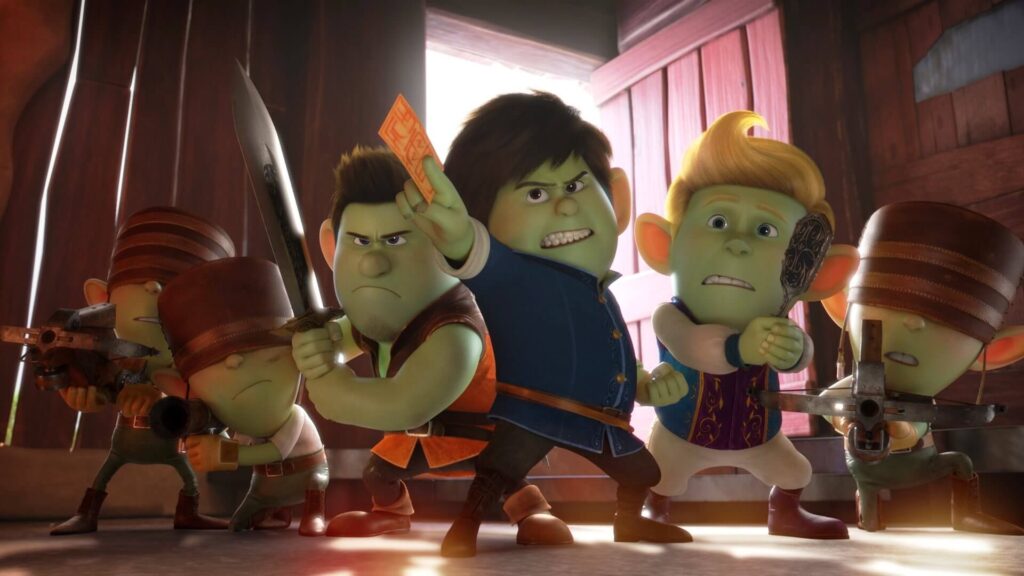
Right, I can imagine. How long were you involved with the film?
Tony: I mean, off and on, almost the whole production. I was off and on for years. Being the voice director, I was there from when we were talking about casting early on, and then we would start to pick up actors as they were available, but mostly largely at the beginning of pre-production time. Patrick Warburton came in kind of late, so they were animating the scratch tracks largely. But then we brought in Patrick and he laid over all that, and they finished animation with his voice in there. It was kind of throughout the whole term, and I was working on other projects including Animal Crackers at the time, so there was always a lot of back and forth. I’m just so thankful that it all worked out, because it was pretty amazing, the kind of hodgepodge schedule that we had in doing this.
Have you ever experienced anything like that before?
Tony: No, only because of my time, too, was somewhat limited. I gave everything I could when I was there, obviously, but working out my schedule at the same time of doing other projects was always tremendously difficult for me, because I like to really focus in. I’m the kind of person that, when I’m attached to something and when I’m working on something, I really focus in. But I always knew that there would be large gaps in production, where I couldn’t be apart of it on a day-to-day basis. So, being able to detach and go to another project and come back to Red Shoes. It was kind of like going home for me, because Red Shoes became one of the most important projects I was attached to, and working with the producer and director became really second nature after a while, and we really developed a great rapport and everything. It was worth the effort, that’s for sure. I was so proud to be apart of it.
Do you see yourself working with this studio again?
Tony: I would be happy to; I like Locus Animation. I started my own animation company years ago, and unfortunately due to financial circumstances, had to close the doors on it. So I know how tough it is to have an independent animation studio. And having done Animal Crackers, that came out on Netflix recently which was an independent, I know what it is to make your own independent animated feature, how difficult this is. And the fact that they not only created their own independent animated film, it had such a great message, it’s such a great family-values-kind of film, and it had such a high level quality. I know what that means, and I know how difficult that is. So yeah, I really believe in the studio, and I’d love to do something else with them.
What draws you to animation exactly?
Tony: No pun intended, it actually is the drawings. I grew up as a child loving to draw and draw characters, cartoon characters. It started out as comic strips, and then I moved and transitioned to animation, and bringing those characters to life through 24 frames a second. And that’s the thing that I’m still passionate about, is bringing characters to life, bringing stories to life that have an impact on an audience. Because it impacted me so much in my childhood. I used to watch TV animation like Super Friends and stuff like that, and graduated to Disney films and was a super fan of all the early Disney films that I grew up with. And now to be in this industry, still drawing everyday, still making cartoons—whether it be for TV or feature films. I love it. I’m just surprised sometimes I get paid.
What’s next for you?
Tony: I’m actually teaching now; I’m at Azusa Pacific University. I started the animation program there. I’ve been doing that for about three years. Love it, I love being able to give back to the next generation. I do a podcast, The Bancroft Brothers Animation Podcast with my twin brother. I’m writing a book right now, on acting for animation. I also am still in the industry, working as a producer and a director, developing some projects while I’m also animating currently on Space Jam—Warner Brothers is doing Space Jam 2, and I’m the lead animator on that. So it’s a busy time.
Special thanks to Tony Bancroft for this interview! Are you interested in Red Shoes and the Seven Dwarfs? Let us know in the comments!
Edited by: Kelly Conley


